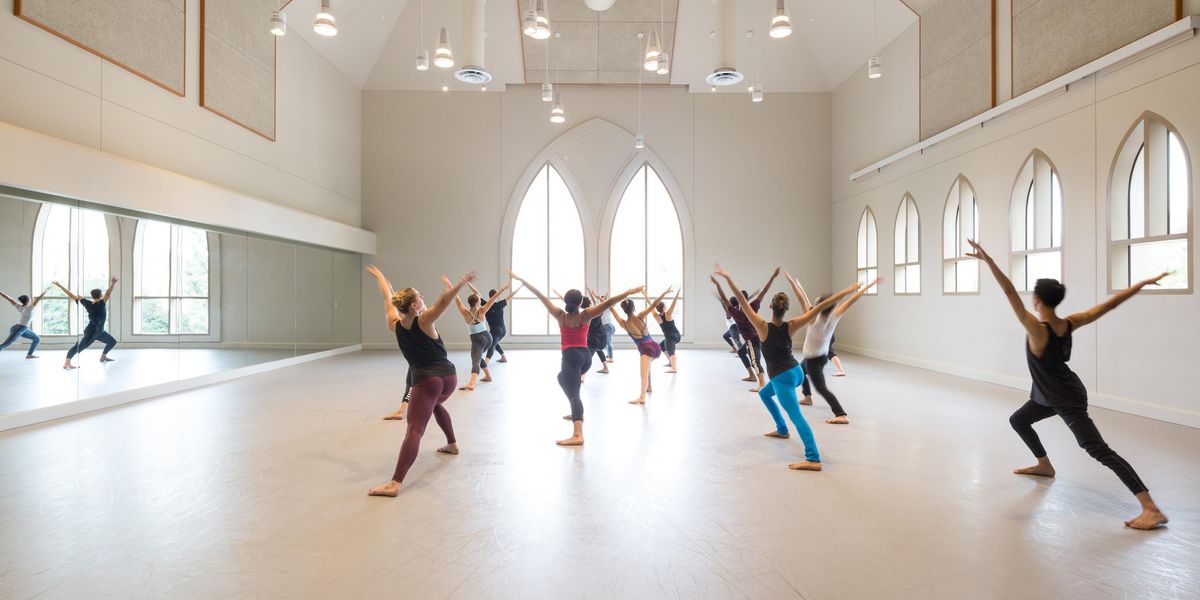Technique My Way: Katherine Crockett
Respecting her body, devoted to her craft
In rehearsal for Martha Graham’s Acts of Light, Katherine Crockett shimmers in a gold unitard. Her high-fashion looks are appealing: It’s no wonder she’s performed in Alexander McQueen and Victoria’s Secret runway shows, or that she was Cate Blanchett’s dance double in The Curious Case of Benjamin Button. But it’s her utter commitment, as she extends and contracts her 5′ 11″ frame into the iconic Graham positions, that really mesmerizes. Crockett joined the Martha Graham Dance Company in 1993 and became a principal in 1996. Along the way, she has had her share of hard knocks, suffering numerous injuries, often due to the flexibility that facilitates such gorgeous lines. DM chatted with her about dancing post-injury and using a positive mindset to encourage physical health.
The Daily Check
Crockett studied ballet intensively at BalletMet in Columbus, Ohio, and was focused on becoming a ballet dancer. But bone spurs in her metatarsals thrust her off of pointe shoes and into modern dance’s arms. After taking a winter intensive at the Graham School, Crockett left SUNY Purchase to study full-time at Graham on scholarship.
At first, she took three classes a day without a problem, but this has changed over the years. “The source of Graham technique is in the pelvis,” Crockett explains. “And since I’m very flexible in my hips, the combination of these two elements has led to injuries,” like a serious tear in her rectus femoris (a quadriceps muscle) in 2006. “I’ve reached a point where I make clear personal decisions about how to warm up, based on the choreography required onstage,” she says.
For Crockett, this means going to other types of classes, such as ballet with Nancy Bielski at Steps on Broadway. In addition, she avoids some of the rigorous floorwork in Graham classes. After her morning bath, she often does her own warm-up, a mixture of a thorough but gentle barre, Pilates including “the hundreds,” physical therapy exercises, light stretching, and Graham floorwork that doesn’t aggravate her hips (see sidebar). Even when she takes Graham or ballet class, she completes these exercises after class or throughout the day.
On rehearsal days, Crockett starts by taking time to see what her body needs. “What’s hurting, what’s tight, what’s flowing, what are my goals, and what am I performing?” she says. “Physically, I look at which hip is higher, which leg isn’t working as well. Then I try to return to a neutral place versus where my body ended after five run-throughs of something the day before. When you’re back at neutral you can charge forward without trying to work around something. You can embody the character you’re working on. I always try to get my body in this place where I can create freely.”
After rehearsal, Crockett returns to “check-in” mode, accounting for the day’s rigor and what lies ahead tomorrow. She might unwind with stretching and breathing or do additional abdominal exercises. Once she gets home, “that’s my time out,” she says. “I spend time with my husband, go to the theater or to hear music, or work on one of my many projects, like Tiny Dancer, a dance film I’ve made.”
Moving Through Pain
Crockett sustained a heel injury (a torn plantar fascia) in 2008, which put her on crutches for eight months. It took her time and patience to recover. “In physical therapy, the first thing they gave me to do was take my foot out of my boot, put it on the floor, and feel the floor,” she says. “It was incredibly painful. Eventually, through tiny increments, I got stronger. But I realized how much we take our bodies and the amazing things they do for granted!”
Crockett says these experiences led her to mindful activities outside of dance—tai chi, reading, filmmaking—and helped her find a perspective of gratitude. “There is a deepened spiritual sense of wanting to create a role that’s richer each time I perform it. When we start dancing we are simply trying to gain control of our bodies. But injuries have taught me to respect and love the miracle of dance beyond that.”
Paving the Way
For Crockett, healing goes hand-in-hand with proper eating. As a vegetarian, she gets the nutrients she needs through tons of veggies, protein-rich carbohydrates like quinoa and spelt, and a dehydrated green mix of vegetables to blend with water. Instead of drinking coffee, Crockett places B-12 liquid vitamin under her tongue if she’s feeling sluggish.
Just as Crockett’s mindset toward her physical practice has evolved, so have her ideas about nutrition. “When I was around 14, I was anorexic,” Crockett says. “But I had to find a way to deal with it. Now I treat my eating and body the same way: with that respectful attitude of ‘You get out what you put in.’ I know I can best help my body speak to my soul by treating it with respect. I want to dance for as long as possible—and look and feel great doing so.”
Lauren Kay is a dancer and writer in NYC.
Crockett in Graham’s
Dark Meadow. Photo by John Deane, Courtesy MGDC.
Working the Center
Though Crockett avoids some Graham floorwork due to injury-prone hips, she loves this exercise and practices it daily. The contracting motion helps you to tap into your center, the primary source of Graham movement.
• Sit on the floor, with back upright and soles of your feet together in a butterfly position. Hands can rest on your ankles.
• Contract your stomach, deepening through the back. Then tip your head toward your feet, lengthen forward into a flat back, and bring your torso upright again.
• Reverse the cycle, leaning forward into a flat back, bending the head toward the feet, contracting backward, and sitting up straight.
• Repeat with your legs in a straddle.




